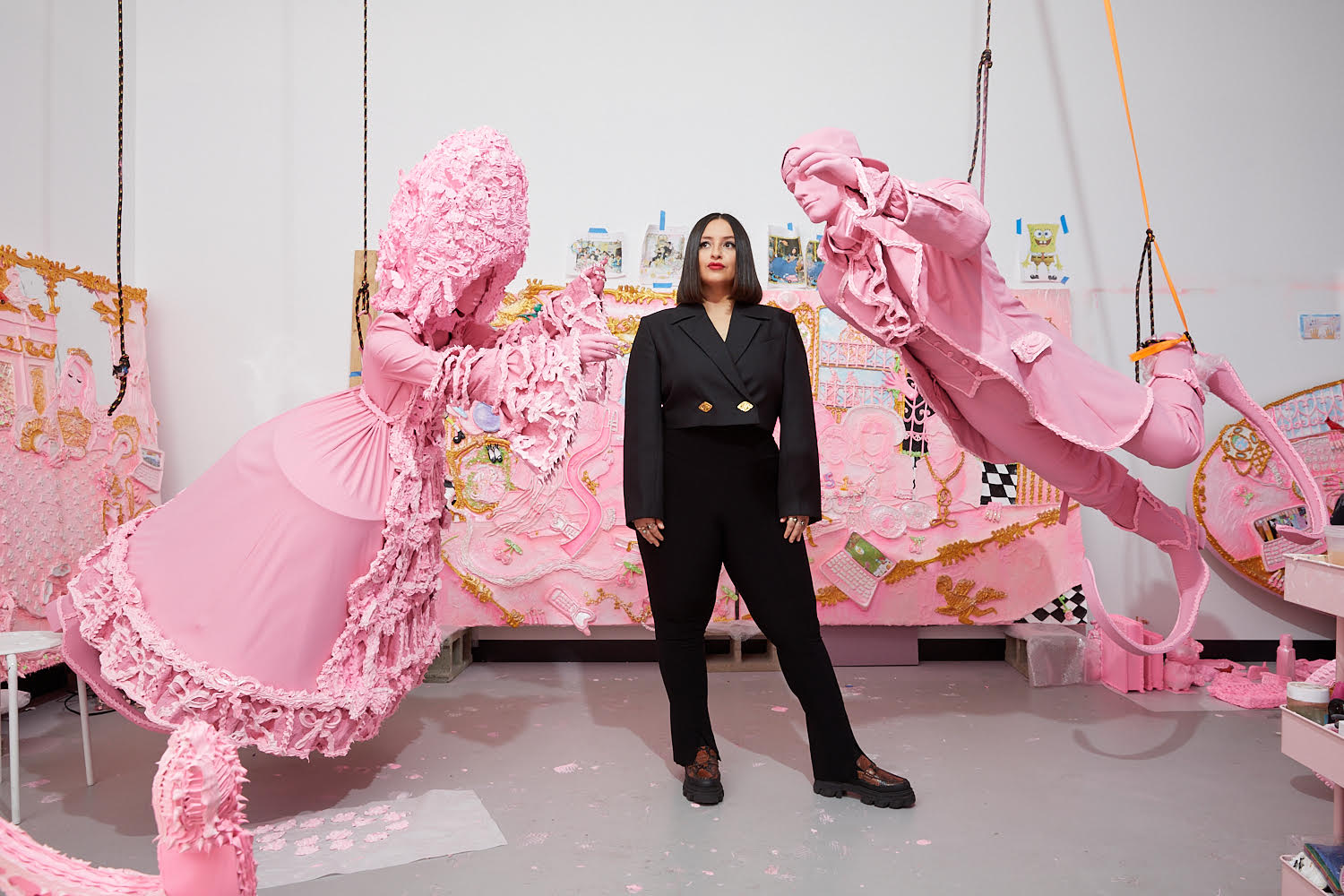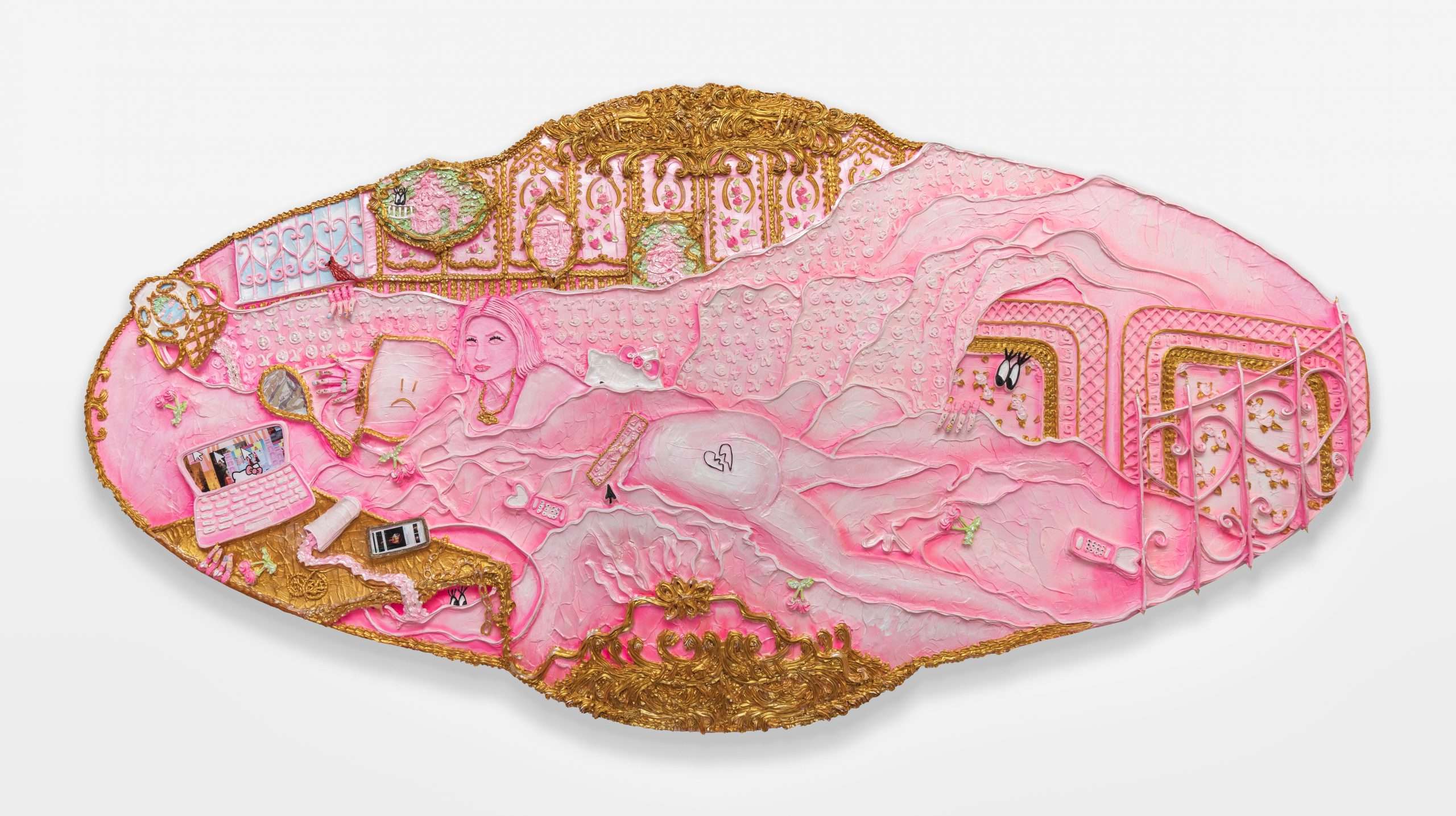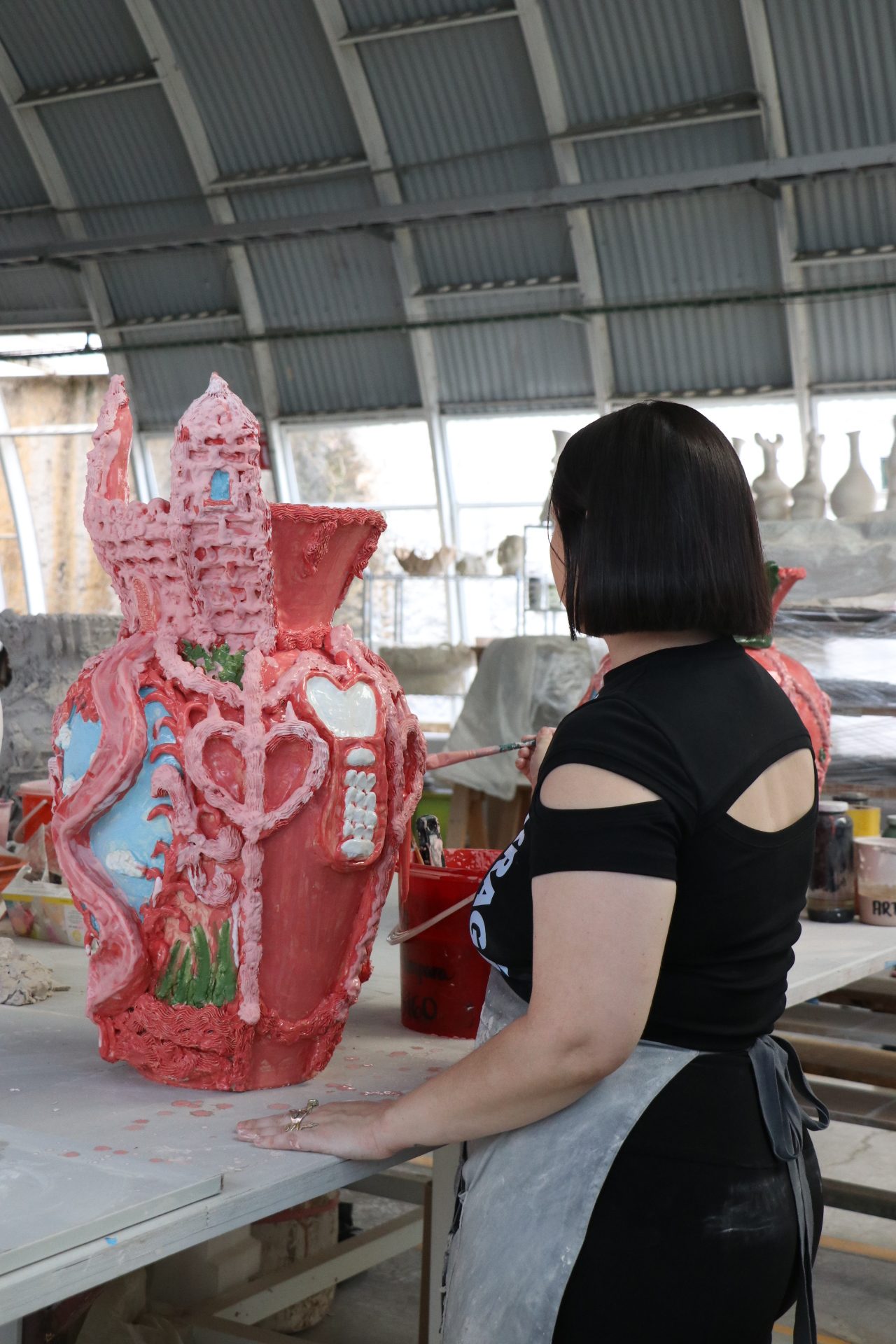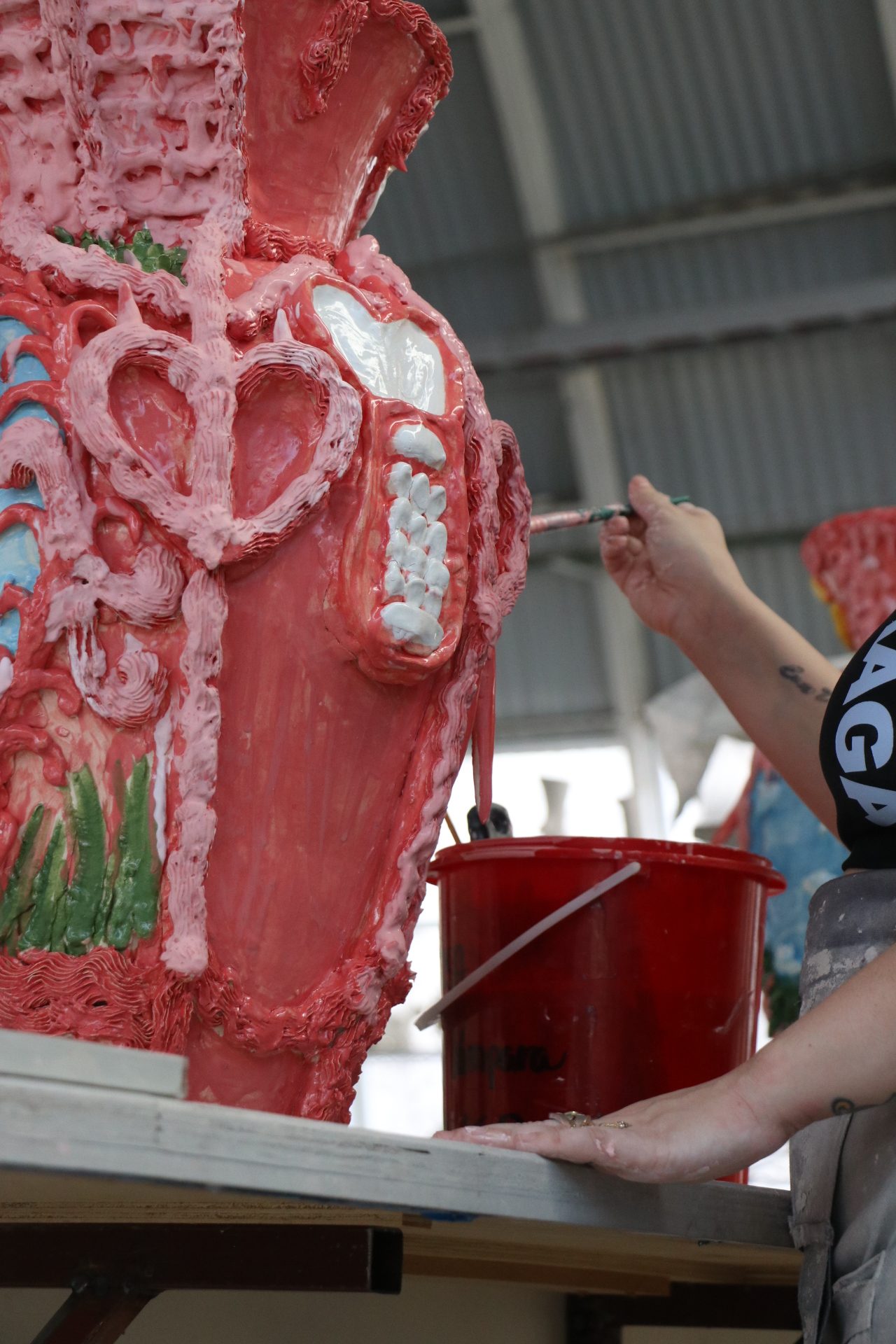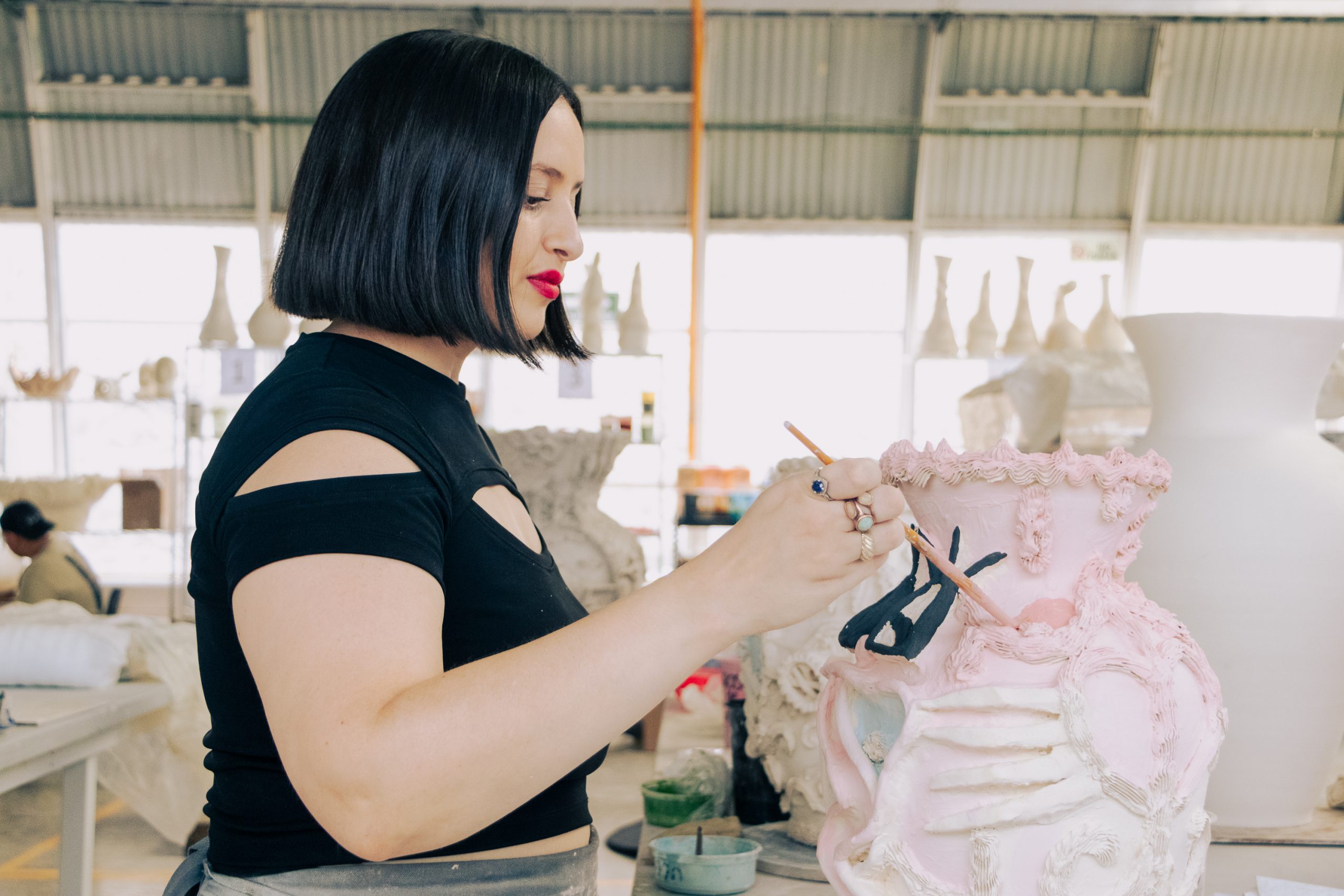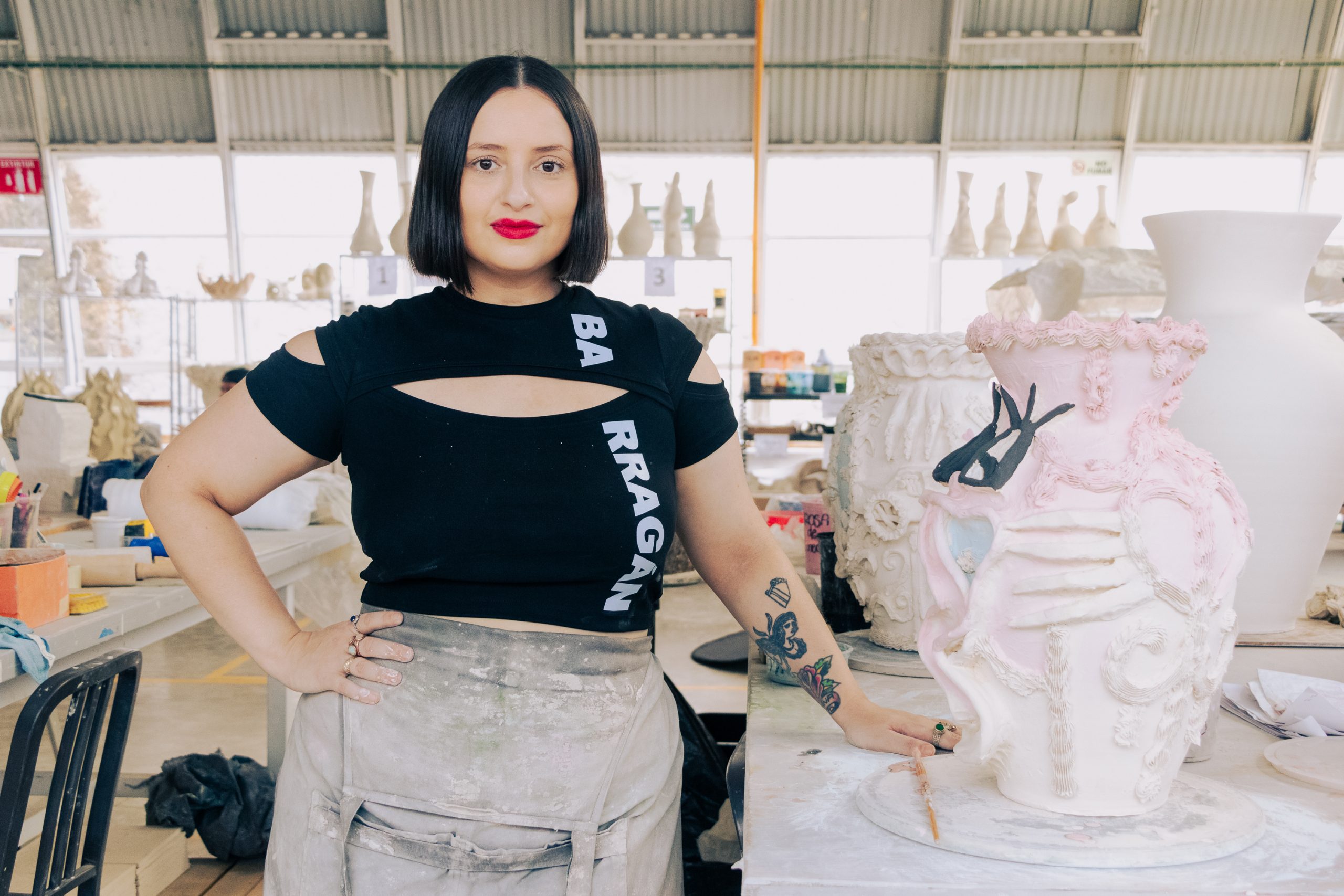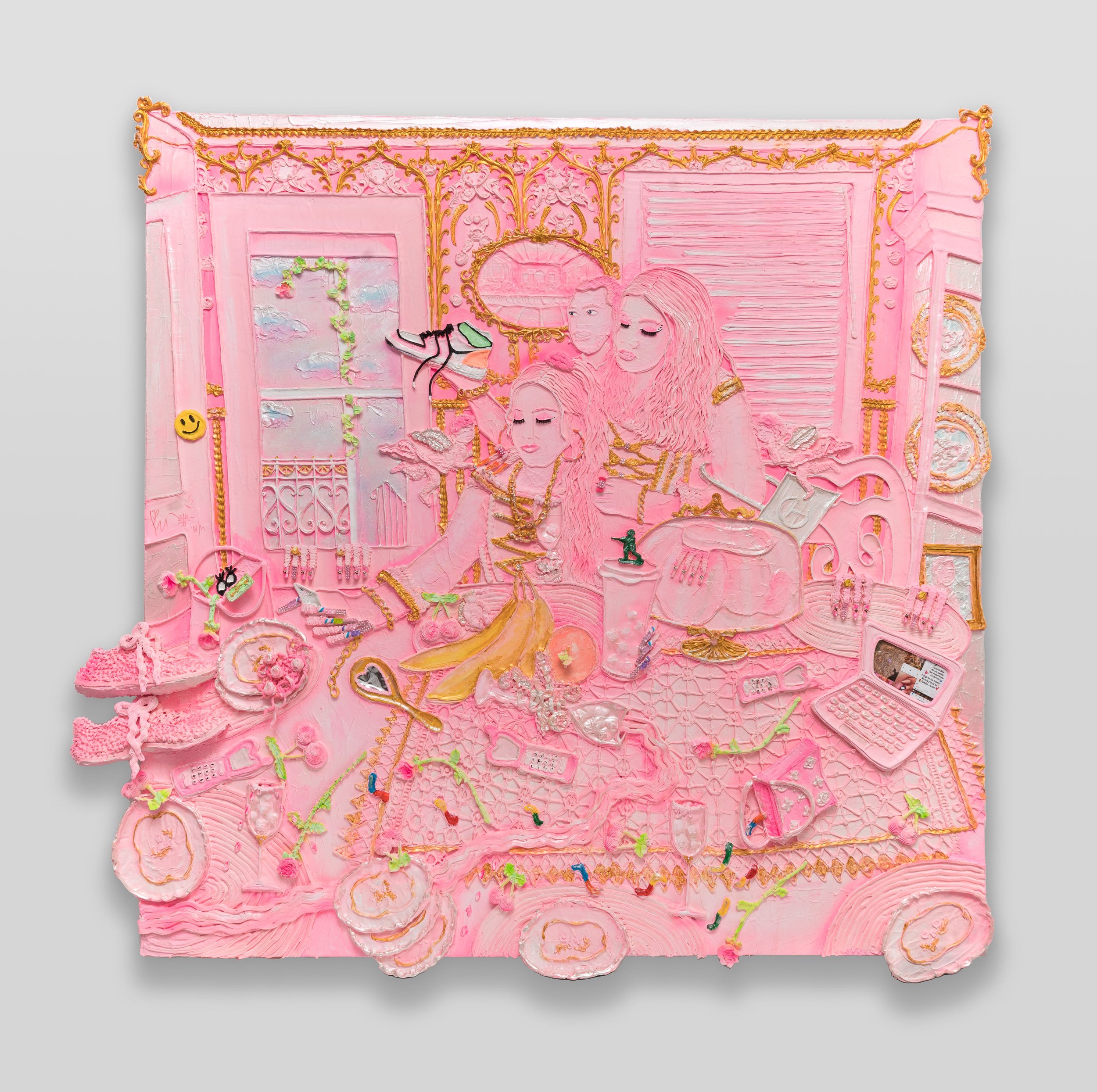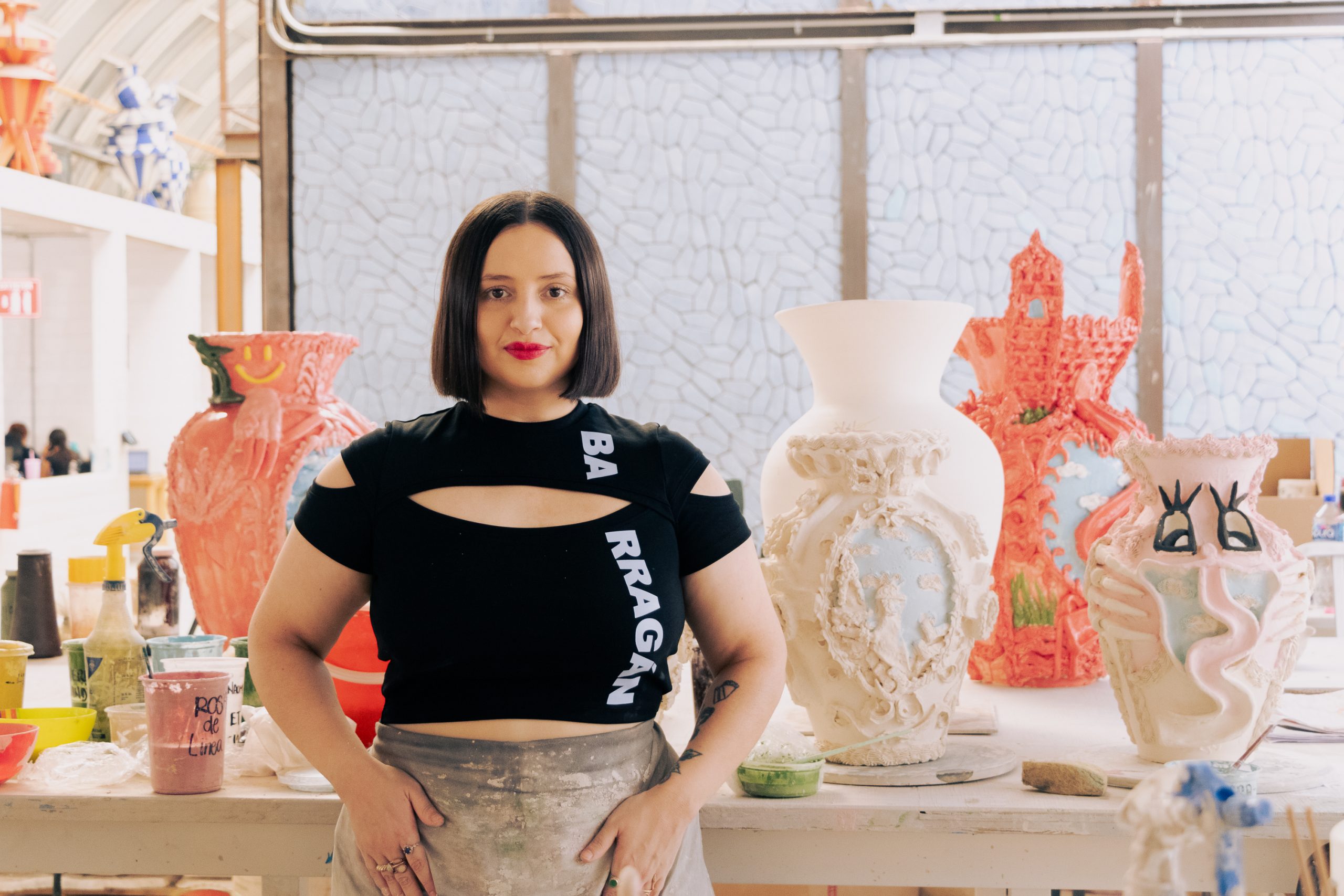
Where things happen #16 — July 2023
What fairy tales and toys such as dolls houses have in common is how they likewise can function as metaphorical and allegorical devices to prepare children for the complex societal dynamics they are bound to experience in adult life.
The art of Chicago-based artist Yvette Mayorga (b.1991) works in a similar way: her alluring works are at once visually seductive, with playful narratives but also dense and engaged, in the disguised layering of socio-political claims from Latino communities in the United States.
In fact, infused in their candy-like appearance and their pink hues, Mayorga’s works turn into igneous visual traps that are intended to make the works attractive and accessible for the viewers stories of societal inequality and surveillance experienced by the artist as a Mexican-American.
At the core of her practice, there is an unapologetic unveiling of the irreducible cultural contrasts existing in the contemporary United States, and the chimeras of the American Dream.
When we met last April at her studio at Mana Contemporary in Chicago, the space was exactly what one would have expected: her signature bubblegum pink was the dominating color in the room, between the works and various elements around.
Mayorga welcomes me with an iced matcha latte tall, for both, that would accompany our conversation around the work on this early afternoon of an unusually hot Chicago for the season.
On the walls there were moodboards that eclectically combined images from the Rococo and XVII/XVIII century fashion and lifestyle with elements from mainstream American consumerist culture, from Nike sneakers and Kawaii Ontario characters.
On the walls there were moodboards that eclectically combined images from the Rococo and XVII/XVIII century fashion and lifestyle with elements from mainstream American consumerist culture, from Nike sneakers and Kawaii Ontario characters.
Funny enough, on a table I also notice a series of polly pocket houses, that immediately threw me back to my childhood: these miniature dollhouses encourage little girls’ imagination, while training a desire to build a warm domestic space as well as teaching one how to take extreme care of their possessions, to not lose the micro characters animating these fantastical miniworlds.
Yvette confesses that she dreamed of owning them in her youth and later they’ve been a big part of her inspiration for her whimsical imaginary and allegorical representations of power dynamics in the domestic space, and are then reflected in society.
Mayorga’s family migrated from Jalisco, Mexico to Illinois, but continued to go back to Mexico every summer to immerse her and her brothers in their native culture, showing a genuine attachment to the life and cultural values to be preserved.
It’s from these particular lenses that the artist unapologetically looks at the American Dream, exploring the stories of Latino people who, as her parents, moved to the US to pursue an illusion of easy abundance and economic success.
Disguised in the saccharine guise, in most of Mayorga’s works we can identify more or less subtle allusions aimed at unveiling how the American ideal of wealth and life quality is mostly a materialistic one, based on consumerism, with all the contradictions that this approach brings within.
This aspect that we can identify in Mayorga’s work also explains the frequent references to Rococò, an historical period characterized by both unparalleled wealth and decadence.
As Mayorga tells me, she can see similarities between that period and our days, once one takes into consideration the growing economic gap between social classes that has through any middle condition exacerbating an unsustainable discrepancy of life conditions between the extremely wealthy and the poor.
At the same time, this elaborative Baroque and Rococò is something that she has also spontaneously absorbed and made more or less consciously part of her visual language during her time in Mexico. She tells me during our conversation, churches and cathedrals in Mexico have been for a long time her only “museum” to nourish her aesthetic taste and art inclinations.
Mayorga explains to me how the architecture in Jalisco and Zacatecas presents deep influences from the French Rococò.
When Yvette Mayorga then shows me what is called Churrigueresque (ultra-baroque) style it’s clear exactly where the elaborated decorations in her works come from: the Churrigueresque, Spanish Churrigueresco is essentially a Spanish Rococo style in architecture, a late Baroque return to the aesthetics of the earlier Plateresque styles that feature a plethora of compressed ornament, surfaces bristle with such devices as broken pediments, undulating cornices, reversed volutes, balustrades, stucco shells, and garlands, aimed at overwhelming the spectator.
This style pursues an extremely elaborated version of baroque that is largely present in Mexico, mostly as a result of a creative resistance to colonial imposition of these styles as marks of power and cultural superiority, claiming a Mexican version.
At the same time the creative and original richness of these decorations can be also interpreted as a local resistance to the dominators, with Mexicans claiming their own voice, and their own version of these imported styles.
On the other hand, the influences of Rococò can also be attributed to a particular figure of Mexican History, Porfirio Díaz, general and politician who served seven terms as President of Mexico between 1848 /1876: apparently, he was obsessed by France, and imposed all these references to this style to the point that Mexicans began to protest claiming a return to their native language and symbologies.
Interestly enough, as following the fate of the Rococò period, also the Porfiriato period ended in revolution…the Mexican revolution.
As I look over her working desk, I notice some other unusual tools for an artist studio: several cake nozzles and piping bags which are usually used for decoration lie there, accompanying the acrylic paints that Mayorga uses.
As she explains to me, these are the tools that allow her to get this juicy, sensual, confectionary aesthetic, as she shapes the works by thickly applying the acrylic on her shaped canvases.
However, all these references to bakery are not casual, but they further bring her family’s narrative into the work: these effects and techniques in fact, mimick and reinvent the artistry of the confectionary labors performed by her mother working in cake bakery, after immigrating to the US.
In building each relief layer by layer applying the acrylic paint in curls and scalloped edges, her labor intensive practice proves to also physically address the condition of the Latino working class, often employed in intensive but underpaid jobs.
Mayorga’s political commentary included in her work is embedded in the practice itself, rather than displayed in a blatant visual experience.
However, at times this is made more explicit in the symbologies and characters she includes.
Her originally shaped canvases feature imagined characters who, as in a fairy tale, can play, and build their life in a “nice” alternative dimension where achieving the American Dream is still possible, transcending economical and sociological restraints and constrictions.
We can see this for instance in her series, Surveillance Locket (2021), which includes a piece that has recently entered the collection of the Museum of Fine Arts Boston: in a eclectic and idiosyncratically designed domestic environment where references to luxurious Rococò and art historical icons coexist with pop and television characters, Mayorga stations toy soldiers in the entries and underneath staircases in a nod to the patrolling and controversy at the U.S./Mexico border.
At the time of our visit, Mayorga was working on a commision for the new O’hare Airport Terminal 5, curated by Behar X Schachman: as I can already see from the work in progress, the permanent installation will employ a playful character that would make it perfectly accessible for an audience of any age and cultural background.
Creating a type of fairy tale playground, Mayorga has imagined an island where people have just arrived, but might also have to leave soon.
At the center two figures represent her parents who, as other Mexicans, came to the US without any certainty, including whether they would have been able to stay.
Close by, a young lady on a swing that she imagines as herself, draws inspiration from the famous painting The Swing by the Rococo painter François Boucher.
On the opposing side, a boy and girl to represent her nieces and nephews are lying on the grass, relaxing. As Mayorga explains to me, she is giving an idea of possible leisure, still, even in this state of uncertainty.
Other elements make more explicit references to her family story, as well as many other Latinx: on the background various tools and vehicles directly make reference to the job her father held at a meat factory, and generally the different jobs of the working class midwest.
As she explains in her work the commentary is subtle, inventively hidden in the opulence of decorations, but both materially and symbolically address the Latino workforce’s relegation to lower salaries, and labor intensive jobs, questioning this condition and at the same time reclaiming a deserved voice and power in the American narrative.
At the same time, she has included a series of elements coming from contemporary pop and mainstream cultural obsessions as Nike sneakers that her nieces and nephews picked for her. Again, referring to the symbols of new American consumption idols, that turn into marks of make it, make the American Dream happen, oftentimes without fully archiving it
This is just one of the recent major public and institutional projects Mayorga has been involved with, and has forthcoming.
In the last few years, Yvette Mayorga has already received wide recognition: her work was part of the critically acclaimed exhibition Estamos Bien: La Trienal 20/21, El Museo del Barrio, and she has on view now her first solo museum exhibition on view at The Momentary, Crystal Bridges Museum of American Art until October.
In addition to the O’hare airport commission, she likewise has a forthcoming exhibition at the Aldrich Contemporary Art Museum opening in September 2023,
As I was finalizing the editorial a few months later, we did a quick catch up call to discuss her recent experience with a residency at Ceramica Suro in collaboration with Castilla/Klyuyeva Gallery, an incredibly resourceful workshop located in Guadalajara, Mexico, which is pushing forward the experimentation with the ceramic medium allowing artists, including major names, to join this process of innovation, and bring it into their practices.
There she was really able to dig deeper in her exploration of the ceramic medium, which she actually started during her grad school. As she admits,that was also the moment when she started to use bakery pipes in her works.
After some weeks of experiments and trial and error at Ceramica Suro collaborating with the partisans and artists there, she was able to find the right mix of powder to apply this technique and make a series of tridimensional vessels that present the same motifs of the oeuvre of her works.
She confesses that she wished she could have prolonged her stay, as it was such an incredible place to expand her practice and research into another medium, and she really appreciated being back in her home country, rediscovering another approach to life.
Significantly placing her work at the intersection of immigration, feminism, identity, and colonialism, Mayorga proves her ability to wittingly address the bittersweet and grim dynamics of access and privilege behind the American Dream.
A fairytale built through media and that spread beyond the national borders, but which unfortunately doesn’t ensure a happy ending for the many who have pursued it.
























